You want to write a non-fiction post and you've never written one before. Where do you start? Come to think of it, what the heck is non-fiction?
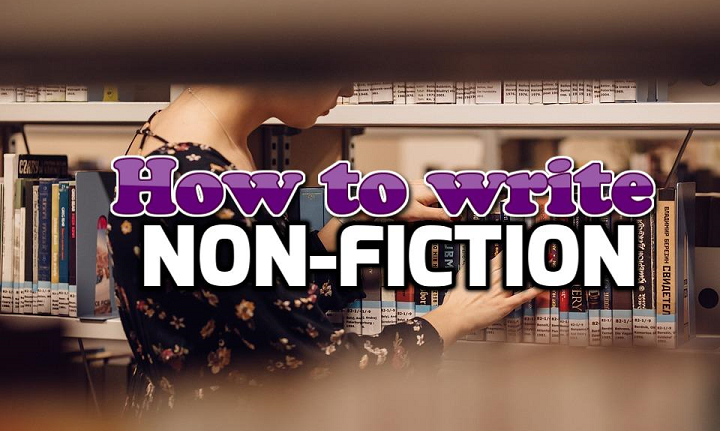
Over the last few months, I have critiqued quite a few non-fiction posts on #thewritersblock, for our non-fiction workshop. It had me thinking that I should put together a few pointers. I hope that by reading this post and gleaning the information from it you get a leg up on writing non-fiction. It should also give you a comfort level as you compose your next non-fiction post for your Steemit audience.
Fun fact - We all write non-fiction. It’s true. If you’ve ever written out a recipe or directions, then you’ve written non-fiction. It does not have to be a scientific paper or a technical manual or a Darwinian biography. Non-fiction uses a bunch of text structures, like the list in a recipe, to convey the information in chunks and discoverable patterns for the reader. I’ll go over text structures in this post.
Non-fiction vs Fiction
Let’s have a look at non-fiction vs fiction. The chart below outlines the differences between a non-fiction and a fiction piece. As you can see fiction has a beginning, a middle and an end. It's a story that unfolds in a setting or scene and should develop characters as it progresses from the beginning to the end. The story is usually something that the author derived from their imagination. It's meant to entertain you.
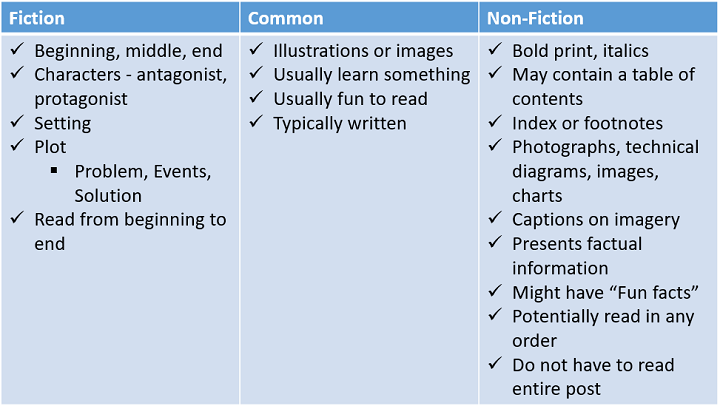
Differences between non-fiction and fiction (this is a text structure)
Non-fiction, on the other hand, is meant to convey factual information, to educate (fiction can also educate but it's not its primary role). Really good non-fiction can also be entertaining. The author will make you want to read it all (we'll get into the text structures for that.) In most cases, you don't really need to read the whole non-fiction piece, just what you've come to educate yourself on.
Right, but now you are probably asking. “What about the 'Based on a true story' novels and fiction pieces? Does that mean they are really non-fiction?”
Well, not quite. The art of writing is ever evolving, just as language evolves. In my mind, it’s okay that the two overlap. I devour historical fiction where the story ties into actual historically accurate events, especially when the author goes into details of the event. After you finish reading my post spend some time reading ‘Based on a true story’: the fine line between fact and fiction[1] it's a long article but a great read. It's probably a topic for another post.
Each time a writer begins a book they make a contract with the reader. If the book is a work of fiction the contract is pretty vague, essentially saying: “Commit your time and patience to me and I will tell you a story.” There may be a sub-clause about entertaining the reader, or some such. In the contract for my novels I promise to try to show my readers a way of seeing the world in a way I hope they have not seen before. A contract for a work of nonfiction is a more precise affair. - Aminatta Forna for the Guardian
Non-fiction Text Structures
How do you write good non-fiction? It’s all about the text structures. Text Structures are tools that the non-fiction author can use to arrange information in an expository format. Through the text structures, the reader can organize their thoughts allowing a more effective understanding of the subject matter. For instance, a specific text structure might call out data in the form of a chart or graph. The reader can quickly digest the data or text in the chart and move on.
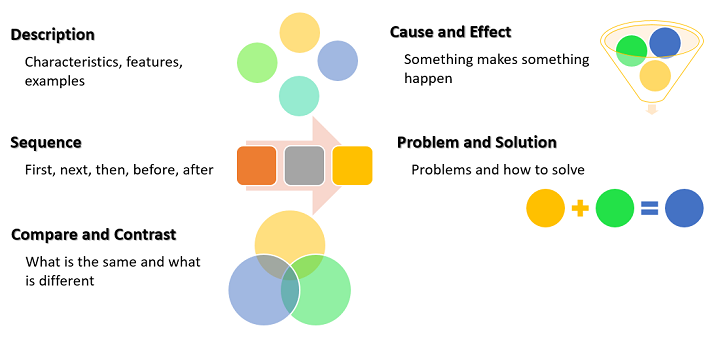
Diagram of the Non-fiction Text Structures
The Structures
The description structure shares the what, where, when, why, who, and how of a topic. It's one of the most common text structures. Be careful not to throw too much information at the reader as it can overwhelm. Example: A hockey coach describing the equipment your little superstar hockey player is going to need on the first day and why they need it all.
Sequence structures are usually the recipes or the lists for a project or some sort of timeline.
When you want to compare and contrast you would describe the similarities or the differences between something. Example: describing new or used items or non-name versus brand-name, fiction or non-fiction.
Authors can use the cause and effect relationship to describe something that has happened and has caused an effect on something else. This structure is often confused with the problem and solution structure as they both have an outcome. Example: Exposing the magnesium to oxygen caused it to burn.
With the problem and solution text structure, the author will present a problem and then describe one or more solutions. You would use some signal words like "problem" or "resolved."
Signal words are often used to indicate hints as to what you are reading. Certain signal words are correlated with distinct types of text structures.
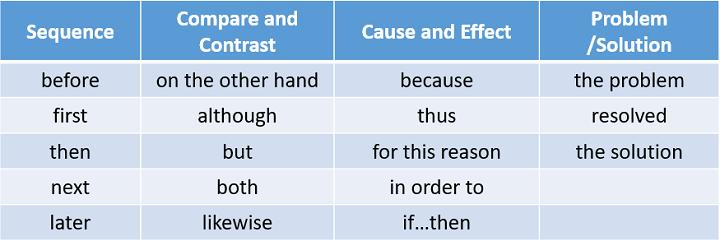
Signal words lists
Non-fiction can be fun to write. You get to help educate readers, and if you are good hopefully entertain. “Pimping” your non-fiction post with some well-placed text structures will help you to reach your audience and convey 'nuggeted' information.
And finally some fun facts:
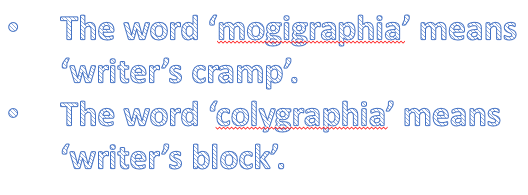
Always keep in mind the purpose and objective of your post. I hope that this post has provided you with some good information for writing your next non-fiction piece. I’ll be calling out and looking for text structures in the non-fiction workshop submissions. Don’t be surprised if I suggest one or two to use.

Are you an aspiring writer? Do you write non-fiction, fiction or poetry? Be sure to join me and others on The Writers' Block. It's a home away from home for writers from around the globe. Come by and join the fun and at the same time learn and improve your writing skills. Win-win. Join us on Discord at The Writers' Block.

Sources:
images - Pixabay
https://en.wikipedia.org/wiki/Non-fiction
https://interestingliterature.com/2016/09/30/22-interesting-facts-about-writing/
Fantastic post. There is so much wisdom here. I’m putting this in my collection of newbie advice posts (which I share with my friends when I invite them to check out the platform). There is so much to learn when you’re just getting up to speed.
Thanks, @jayna. Always learning (I'm still learning) even after being at it for a while :-)
Same here. Steemit University, anyone?
Great post, bookmarked for when I start my NF writing series. That's so long as I'm not struck down by colygraphia.
Thanks... We all suffer from that from time to time.
Brilliantly put Sir, great to have you at The Block. Thanks for sharing.
Thanks man - love hanging around.
What a detailed, super-informative post! Thank you very much for sharing :).
PS By the way, for some reason, I always write as if I write fiction. lol It's almost as if before I start describing a scene, or a feeling, I have to look at the situation as an outsider. And then describe it. So it always comes out as fiction :).
Thanks, making non-fiction interesting and 'story like' is more difficult than most realize. Have a read of the article "based on a true story" might help set your mind at ease :-)
Thank you, @jasonbu! I'll definitely take a look :).
Amazing post!!! I think it might be related to what I'm posting in my profile, so I'm resteeming it :)
Great job, Jason! But I don't really expect much different from you! ;-)
Thanks Tiny. Always appreciate and welcome your feedback.
(you hear an engine rev and horn honk)
MEEP! MEEP!
(the window on the humvee rolls down to reveal a warm smiling face)
"Hello! I'm @shadow3scalpel and with the help of my protege, @chairborne, we are actively assisting veterans, retirees and active servicemen and women here on Steemit. We feel it is our 'duty' to support each other. Any questions or comments you may have, simply respond to this comment, thank you!"
(the window rolls up and the engine roars as it drives to the next person on the list)
Comment by @killerwhale. This is a opt-in bot.
Thank you so much for sharing this... very nice :)